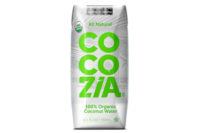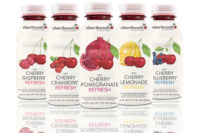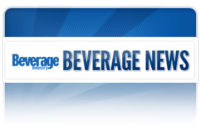With thousands of articles about genetically modified organisms, or GMOs, hitting the wire last year, consumers quickly learned the meaning of the acronym. Whether GMOs are safe or not still is up for debate. Regardless of the answer, consumer concerns about GMOs have increased the demand for GMO-free products, resulting in the rise of GMO-free claims, the development of a non-GMO movement, and the creation of the Non-GMO Project Verified label, says Lu Ann Williams, director of innovation for Innova Market Insights, the Netherlands. For example, General Mills announced the elimination of GMO ingredients from its flagship Cheerios cereal last month. Additionally, Whole Foods Market announced that all products in its U.S. and Canadian stores must be labeled to indicate whether they contain GMOs by 2018.
For the beverage industry, this rising demand for GMO-free products could impact drinks sweetened with high-fructose corn syrup (HFCS), in particular, explains Jackie Gray, director at Willard Bishop, Barrington, Ill.
“While the natural and organic movement has been around for a while, shoppers and consumers are becoming more educated on the impact of GMO ingredients in their products,” Gray says. “One of the biggest ingredients in sweetened beverages is high-fructose corn syrup. As a percentage of [the] corn used to manufacture HFCS is GMO corn, we can assume that non-GMO consumers will be opting for other sweeteners in their beverages.”
As a result, they might seek out drinks with alternative sweeteners such as honey, stevia or cane sugar, she says.
Overall, it is likely that GMO-free verified products will be one of the fastest-growing areas in the natural and organic foods market, Innova’s Williams notes.
In fact, more than 14,000 products now have been Non-GMO Project Verified, and annual sales of these products surpassed $5 billion as of the third quarter of 2013, according to the Non-GMO Project.
Because organic products are required to be free of GMOs, this demand could affect the organic segment as well. In fact, according to the Organic Trade Association’s (OTA) U.S. Families’ Organic Attitudes & Beliefs 2013 Tracking Study, 32 percent of parents who learned about GMOs in the news were significantly more likely to increase their organic purchases.
Knowing the consumer
Last year, 77 percent of U.S. families purchased organic beverages at least occasionally, which marks a 4 percentage point increase from 2011, according to the OTA study.
“The desire for healthful options, especially for families with children in the home, leads consumers to choose organic,” says Barbara Haumann, senior writer and editor for the OTA, Brattleboro, Vt. Buying organic also enables consumers to avoid products with things like hormones and GMOs, which is another important attribute to some consumers, she adds.
Millennials also have shown an interest in natural, organic, fresh and specialty-appeal products, Willard Bishop’s Gray says. This demographic is less brand loyal and very price conscious but is willing to pay a premium in some instances, she explains.
“There’s a lot more information out there [on the Internet] on the benefits of natural and organic, and online is where the millennials live,” Gray says. “So, it stands to reason that this group of shoppers and consumers will be more aware of the benefits of natural and organic and make their purchases with this information in mind.
“I also believe that with more natural and organic choices and increased demand, price points have fallen a bit, making product selection more about the product and less about the price point,” she continues.
During the economic downturn, many consumers could not justify spending more money on organic beverages, which typically had higher unit prices than their standard counterparts, according to Chicago-based Euromonitor International’s August 2013 report “Organic Beverages in the US.” However, as the economy continues to improve, this might be changing. According to Jon Hauptman, partner at Willard Bishop, shoppers are willing to pay a modest premium for natural and organic products because of their unique attributes and benefits. However, shoppers now are increasingly aware of the prices across retailers for the natural and organic products that they purchase frequently, he adds. As a result, many leading retailers are expanding their private-label natural and organic offerings, he says.
“These private-label lines give retailers an opportunity to help shoppers stretch their grocery budgets while purchasing natural or organic products and comprise a key component of a retailer’s price-value positioning,” Hauptman says.
Age and income also impact the types of products that consumers buy at retail, according to Information Resources Inc. (IRI). The Chicago-based market research firm recently released its first NutriLink segmentation study, which classifies U.S. consumers into six groups based on their behavior and attitudes toward health, diet and nutrition as well as their demographics. Two of the segments, in particular, are eager to try new healthy and organic products, it states. For instance, the Wise and Healthy group of shoppers has a median age of 68 and a median income of $49,000. These shoppers are not as adversely affected by changes in the economy and can afford to buy healthy, nutritious groceries, the study notes. They make an effort to exercise daily and believe in eating healthy food at least 80 percent of the time in order to stay healthy and disease-free. Sixteen percent of shoppers fall into the Wise and Healthy segment. Similarly, Healthy Chic shoppers actively are trying to improve their eating habits and tend to follow strict diets or eat healthy at least 80 percent of the time to stay healthy and maintain or lose weight, the study states. With a median income of $76,000 and a median age of 44, this group accounts for another 16 percent of the population.
IRI also partnered with Schaumburg, Ill.-based Spins LLC to create Spins NaturaLink, which segments the total U.S. population into seven groups to identify how shoppers think about, purchase and use natural, organic and/or eco-friendly products. Two of these groups, in particular, are dedicated to purchasing natural and organic products. The first group, True Believers, is passionate about staying fit and healthy. These consumers are focused on trying new things and serving as strong role models for their children. They also are strong believers in the benefits of natural and organic products. True Believers enjoy a median income of $65,000, have an average age of 40, attended college and, in some cases, embarked on post-graduate studies. The other group, Enlightened Environmentalists, is passionate about the environment and making good choices to support it. These shoppers are making a significant effort to make healthier choices and will go out of their way to shop at stores that carry natural and organic products. Enlightened Environmentalists are older than True Believers, averaging 63 years of age, attended graduate school, and have a median income of $57,000. These two groups make 46 percent of all natural/organic product purchases, according to Spins.
“These two groups are ‘power shoppers’ when it comes to natural and organic products,” said Tony Olson, chief executive officer of Spins, in a statement. “Manufacturers and retailers have a significant opportunity to better understand and tap into their needs, wants and motivations — not only to drive sales volume but also to continue to deliver the innovative products that shape our industry. At the same time, it is important to motivate shoppers in other segments to expand their knowledge of natural and organic products to stimulate buying behavior and ensure long-term growth.”
Considering that nearly all U.S. consumers purchased natural and organic products in 2012 — 97 percent bought natural and/or organic products, and 70 percent bought organic products — according to Spins, it’s no wonder that beverage sales within the natural and organic segment are growing, too.
Rising popularity
Within the beverage industry, U.S. sales of organic beverages grew by 7.4 percent to $3.8 billion in 2012, the OTA’s Haumann says. This increase was led by growing consumer interest in healthy ingredients, expanded distribution and availability of organic beverages, innovation and convenience, she explains. Organic energy drinks, kombucha, coconut water, tea and fresh juice were among the most popular beverage offerings within the segment, she adds. However, organic coffee experienced the highest growth in 2012 with a 28.2 percent increase in sales, Haumann notes. Organic fresh juice and beer also showed significant growth with sales increases of 26.3 percent and 24.5 percent, respectively, she adds.
According to Spins, dollar volume for certified-organic, shelf-stable functional beverages increased 33 percent for the 52 weeks ending July 6, 2013, compared with the prior-year period. Among natural food and beverages, the coffee, coffee substitutes and cocoa segment was the fastest-growing, demonstrating a 40 percent increase for the 52 weeks ending Dec. 22, 2012, compared with the prior-year period. Natural refrigerated juices and functional beverages also composed a leading part of the natural segment, it adds.
With activist groups pushing for GMO labeling and a definition of the term “natural” as it pertains to labeling, it looks like news will continue to surface within the natural and organic beverages segment in the future.
Governmental regulations
Although the U.S. Food and Drug Administration (FDA) has not developed a definition for the use of the term “natural” or its derivatives, brands are able to use the claim if the product does not contain added color, artificial flavors or synthetic substances, according to the FDA’s website.
Organic products, however, are under much stricter standards. According to the U.S. Department of Agriculture (USDA), certified-organic products must be produced without excluded methods, such as genetic engineering; produced according to the national list of allowed and prohibited substances; and overseen by a USDA National Organic Program-authorized certifying agent, following all USDA organic regulations. Organic products also can fall into three categories: 100 percent organic, organic, and “made with” organic.
Both 100 percent organic and organic products can include the USDA organic seal on the packaging; however, all ingredients included in 100 percent organic products must be certified organic, any processing aids must be organic, and product labels must state the name of the certifying agent on the information panel. If these qualifications are met, the product can use a “100 percent organic” claim.
Organic products, on the other hand, can use up to 5 percent of non-organic ingredients from the national list of allowed and prohibited substances, excluding salt and water. All agricultural ingredients must be certified organic, except where specified on the national list, and — like 100 percent organic products — the name of the certifying agent must be stated on the information panel.
“Made with” organic products, however, only require 70 percent of the ingredients to be certified organic, excluding salt and water. These also must be produced without excluded methods, such as genetic engineering, but any remaining agricultural products are not required to be organically produced. Non-agricultural products must be specifically allowed on the national list. Also, like the other two organic claims, product labels must state the name of the certifying agent on the information panel. As a result, labels for these products can state that they are made with up to three organic ingredients or ingredient categories, according to the USDA.







